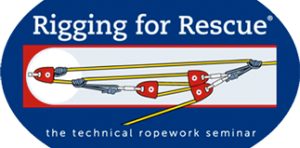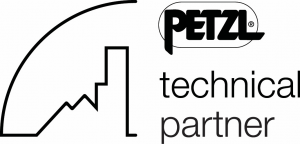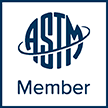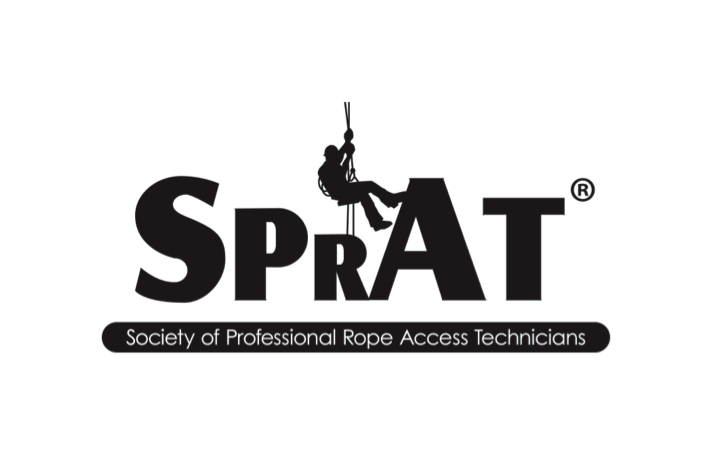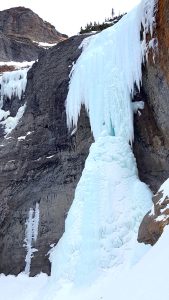
Ingram Falls
The backcountry ice in the San Juan’s delivered in spades last week with an ascent of the classic Ingram Falls above Telluride. Ingram seems to form only once or twice a decade. It is a prize tic, when you can get it. Solid WI5 on the second pitch and some sandbag avocado leaves to negotiate on pitch one. Our last Waterfall Ice Rescue Workshop for 2022 is scheduled for the week of Feb 21-25. We still have a couple of remaining spots.
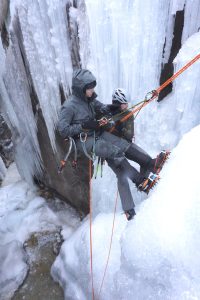
Waterfall Ice Rescue in Ouray
These past two weeks have been busy with Waterfall Ice Rescue Workshops. The workshops are a blend of ice climbing movement skills, partner rescue, and small teams rescue. All in the waterfall ice and alpine domains. An added bonus included the Ouray Ice Park opening up some of the first new terrain in the Ice Park in many years. The Cliffs section -located between South Park and New Funtier – was finally brought to fruition this season as a lead-only section of the Park. Following a rescue training for that section of the Park, the Cliffs were opened up for a handful of first ascents.
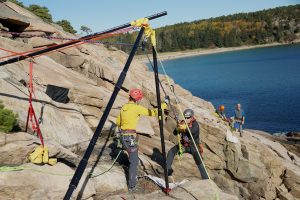
October on the North Atlantic
Every other year we have the pleasure of returning to Acadia National Park to train with personnel from across the Great State of Maine. The seminars are arranged as open enrollment events to teams across Maine who are responsible for rope rescue response in their respective jurisdictions. It ends up being a terrific team-building week as many of these practitioners frequently work with each other on larger agency assist calls. Familiarity with each other’s systems is critical to mission success on mutual aid calls. The host team for the training week is MDI SAR. MDI works closely with the NPS rangers in Acadia to provide mutual aid response to incidents in the Park. Acadia has some excellent sea cliff rock climbing that generates occasional rescue incidents. Additionally, there is an abundance of opportunity to find oneself in trouble from scrambling on the various granite features encircling Mount Desert Island. In addition to the Fundamentals, we also covered some more technically challenging scenarios utilizing artificial high directional devices as well as a Cross-Haul 4-rope system for spanning high hazard terrain (in this case, the North Atlantic). The Braced Sideways A-Frame technique proved to be tailor made for this particular escarpment given the absence of a guying option on the ocean side of the AHD.
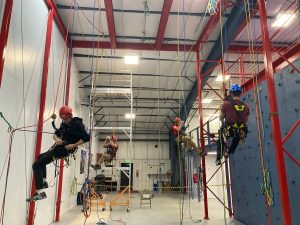
SPRAT in Ouray
Last week we hosted the first of two autumn SPRAT rope access training and evaluation sessions. 100% of the candidates passed their evals and are now certified SPRAT rope access technicians. Our next offering is Nov 30-Dec 4, 2021. We are welcoming SPRAT upgrades, recerts, and new Level 1 candidates. Please consider joining us for a week of rope access maneuvers followed by an independent evaluation/certification session.
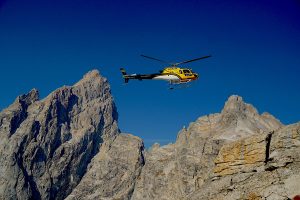
Jenny Lake Climbing Rangers
The weather gods took care of us last week with some rock solid high pressure and bluebird skies for our annual training event at Grand Teton National Park. The highlight of the week was utilizing the contract helicopter to ingress personnel to the top of Peak 11,840 for a multi-pitch lowering exercise down some unknown ground. The peak is situated between Teewinot and the Grand Teton and it appeared to offer a very steep/clean south face for our training exercise. The Jenny Lake Climbing Rangers are responsible for rescue in Grand Teton NP. The team relies on a variety of techniques for effectuating rescue efforts including helicopter short-haul, traditional rope rescue methods, and hybrid methods that utilize both ground and air approaches. Multi-pitch rescue methods in a Big Wall environment like Peak 11,840 require a number of approaches to be conducted safely and efficiently: protecting for overhead hazard by off-setting station positions relative to the gravitational fall line and/or park yourself under a big roof deploying personnel down the wall in advance of the patient/attendant to scout out station positions and anchoring options avoiding terrain traps such as gullies as well as rope pinch points maintaining a rope connection from one station to the next. Basically, never find yourself positioned on a Big Wall without a secure rope connection either above or below and as always: crisp command & control, thorough cross-checks of systems, and a shared team vision for what needs to happen next The Jenny Lake Climbing Rangers are some of the best in the business at conducting difficult alpine rescue missions. Once again, it was our pleasure to be able to spend a week in the mountains with them honing the details and nuances of challenging rope rescue scenarios.
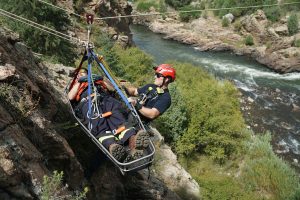
West Metro Fire
This summer’s West Metro Fire training event followed an A,B,C shift rotation of 2-days each shift. The focus was on swiftwater-related ropework and rescue solutions for both pickoffs and patient transport. Our first scenario was a traditional Guiding Line through steep slope ground to a river crossing. At the river, we unstrapped the patient’s litter restraints (for the obvious swiftwater hazards) and we added an opposite side Tagline for the uphaul out of the belly of the trackrope system. I suppose you could call it a Guiding Line to Kootenay Highline System conversion. The second scenario was a traditional drooping twin-track Kootenay Highline System, utilized for its variability in tension for executing a swiftwater pickoff of a stranded recreational kayaker, or similar. Waterton Canyon was an optimal location for our training focus. Thank you, West Metro Fire technical rescue!
